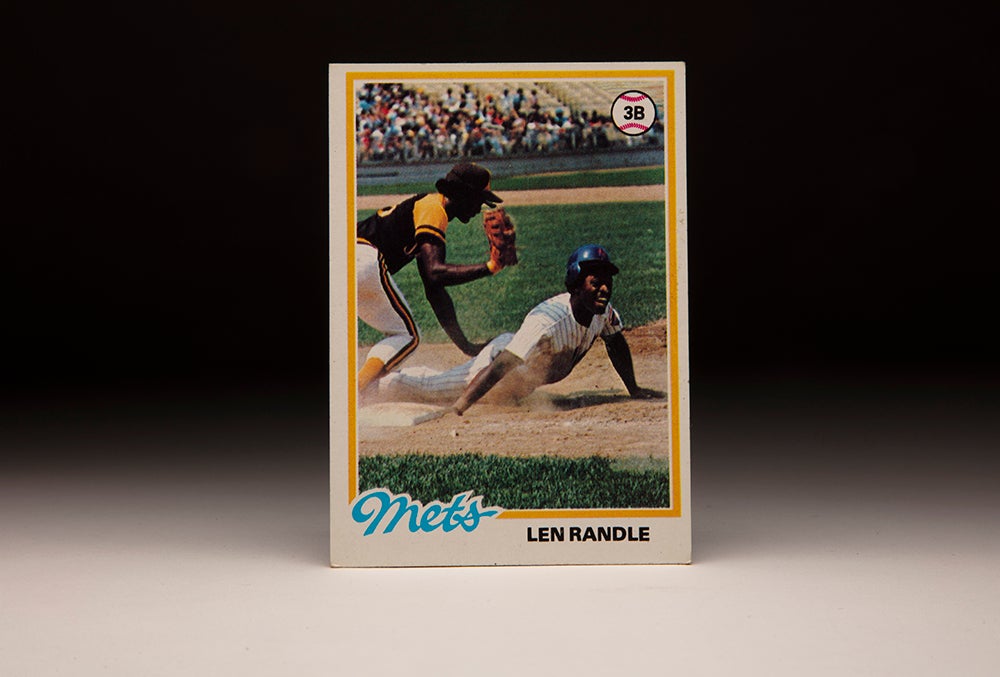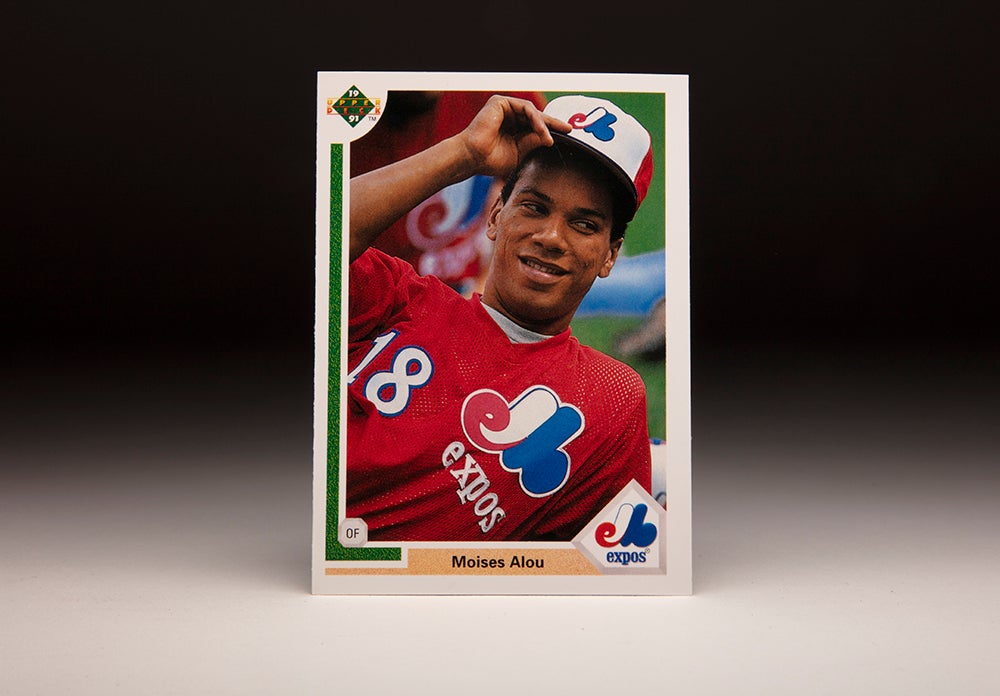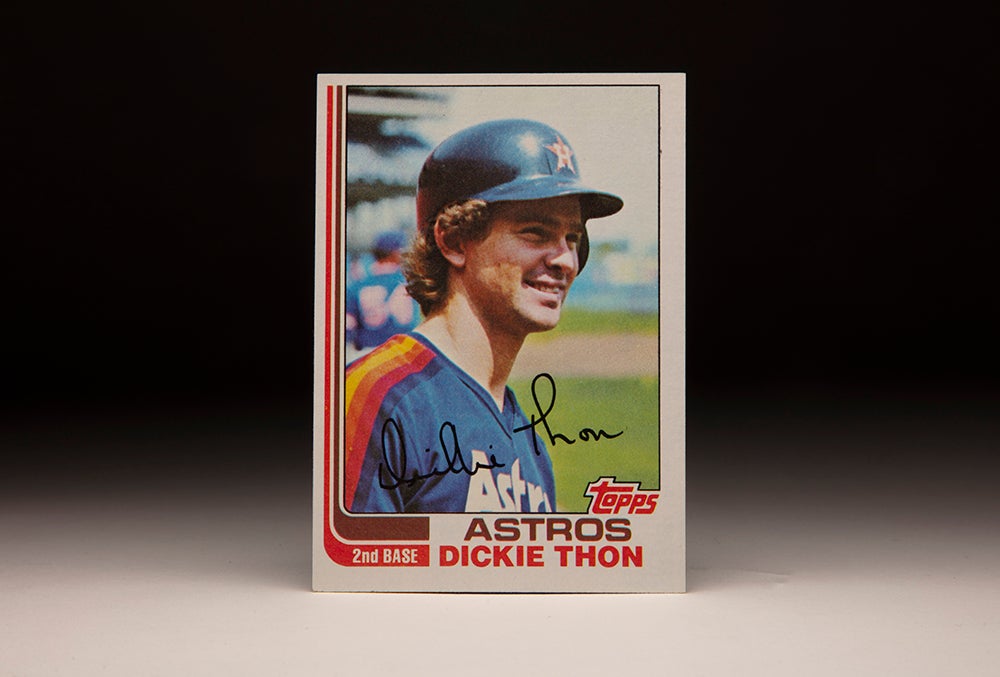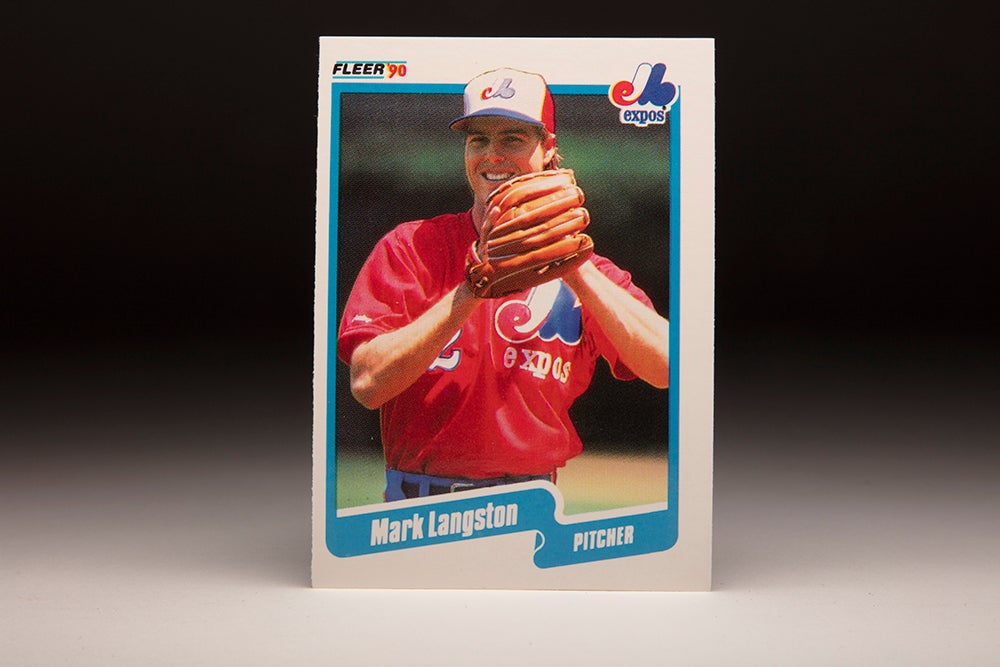- Home
- Our Stories
- #CardCorner: 1979 Topps Richie Zisk
#CardCorner: 1979 Topps Richie Zisk
After just four full seasons in the big leagues, Richie Zisk stood on top of the baseball world on Nov. 9, 1977. That day, Zisk signed a 10-year, $2.9 million contract with the Texas Rangers – setting a new standard for free agents.
Zisk would only play six of those 10 years and would never achieve the numbers he did prior to joining the Rangers. But when documenting the story of free agency in baseball, it is impossible to tell the tale without mentioning the powerful Brooklyn-born outfielder.
Born Feb. 6, 1949, Zisk grew up in Parsippany, N.J., and was an all-state baseball selection as a 15-year-old sophomore. A four-year starter as an outfielder, Zisk also starred on the pitching mound, going 8-0 with a 1.46 ERA as a junior.
After initially committing to attend Seton Hall University following his 1967 high school graduation, Zisk signed with the Pirates – who drafted him in the third round that June. He reported to Salem of the Appalachian League, where he hit .307 with 16 home runs and 51 RBI in 56 games, posting a .422 on-base percentage with the help of 40 walks.
Zisk suffered a knee injury in 1968 and appeared in only 53 games for Gastonia of the Western Carolinas League. But he hit .281 with 13 home runs and was placed on the big league roster following the season.
Official Hall of Fame Merchandise
Hall of Fame Members receive 10% off and FREE standard shipping on all Hall of Fame online store purchases.
Zisk returned to Salem, Va., in 1969, after the team had moved up a level to the Carolina League. In 78 games, Zisk hit .317 with 11 home runs before hitting. 319 in the Florida Instructional League following the season. Then in 1970, Zisk firmly entrenched himself as a top prospect by hitting 34 home runs in 125 games with Double-A Waterbury of the Eastern League.
But in a Pirates’ system flush with young talent, Zisk was not fast-tracked to the big leagues.
“The boy is almost ready,” Pirates manager Danny Murtaugh told the Pittsburgh Post-Gazette in Spring Training of 1971. “I wouldn’t want him sitting on the bench for us. I’d rather see him somewhere playing every day. If something serious ever happens to Roberto Clemente or Willie Stargell, I wouldn’t hesitate to call up Zisk.”
Zisk began the 1971 season with Triple-A Charleston and hit .290 with 109 RBI – the top total in the league – before making his big league debut on Sept. 8. He hit his first home run 10 days later then watched from the sidelines as the Pirates won the World Series.
“When the day comes when I feel I can play in the major leagues and I’m not up here,” Zisk told the Post-Gazette, “then I’ll be disappointed and very discouraged.”
Following the 1971 season, Zisk hit .310 in Puerto Rican Winter League with 10 homers and 40 RBI and was voted Player of the Year. He returned to Charleston in 1972, earning a July call-up and later a September appearance in Pittsburgh during a season where he hit .308 with 26 homers and 86 RBI in Triple-A.
On Dec. 31, 1972, Clemente died in a plane crash while ferrying relief supplies to earthquake-ravaged Nicaragua. Though it was hardly ideal circumstances, Zisk – who was out of minor league options – finally had his big league opportunity.
“Whether he makes our starting lineup depends on how well he does this spring, and if he does better than some of our other outfield candidates, who are very capable,” Pirates manager Bill Virdon told the Herald-News of Passaic, N.J. “Richie Zisk will be a Pirate all of 1973. I don’t think there’s any questions about it.”
Virdon used Zisk off the bench for the first two-and-a-half months of the season before moving him into the starting lineup as the left fielder in late June. In his final 79 games that year, Zisk hit .347 with 10 homers and 51 RBI – hitting safely in 59 of those contests.
“The potential is there,” Zisk told the Pittsburgh Press in Spring Training of 1974 in what turned out to be a prophetic statement. “It’s a matter of me applying myself. There’s a chance to make a lot of money.”
On Opening Day of 1974, Zisk was hitting fifth in the Pirates’ lineup and playing right field. He warmed up along with the weather, recording 24 RBI in August alone – including a stretch of 10 straight games with a run batted in.
Pittsburgh entered the season’s final three games tied with St. Louis atop the National League East. Zisk’s pinch-hit, seventh-inning RBI triple on Sept. 30 helped the Pirates rally to a 2-1 win over the Cubs – keeping Pittsburgh tied for first. The next night, Montreal beat St. Louis while Zisk had two hits to help Pittsburgh beat Chicago.
On the season’s final day, the Cardinals and Expos were rained out. With Pittsburgh needing a win over the Cubs to clinch the NL East title, Chicago led 4-2 entering the bottom of the ninth when Zisk drew a leadoff walk. He was replaced by pinch runner Miguel Dilone, who would score on a Dave Parker groundout to cut the deficit to one. A passed ball later in the inning tied the game, and Pittsburgh won in the 10th on a Manny Sanguillen single to clinch a postseason berth.
Zisk appeared in three of the four games (with two starts) against the Dodgers in the NLCS, going 3-for-10 as Los Angeles advanced to the World Series. In the spring of 1975, Murtaugh moved Zisk to left field and Stargell to first base to open a spot for Parker in right field. The Pirates’ “Lumber Company” lineup also featured Rennie Stennett, Al Oliver and Richie Hebner – and Pittsburgh won 92 games and another NL East title in 1975.
Zisk hit .290 with 20 homers and 75 RBI – but once again the Pirates lost in the NLCS, this time getting swept by Cincinnati despite Zisk’s five hits in 10 at-bats.
He would not appear in another postseason game in his big league career.
Zisk nearly made another kind of history in 1975. He played virtually the entire season without signing a contract, coming to terms on a one-year deal worth a reported $60,000 two days before the start of the NLCS. Had he remained unsigned, Zisk could have joined Andy Messersmith and Dave McNally in testing the reserve clause that December.
“Though Richie said playing without a contract wasn’t bothering him, I think it was,” Pirates general manager Joe L. Brown told the Pittsburgh Press.
Within two years, however, Zisk would be playing for his third big league team.
In 1976, Zisk hit .289 with 21 homers and 89 RBI in a career-high 155 games. But the Pirates failed in their quest for a three-peat in the NL East – and Murtaugh, who had been ill for years, announced his retirement on Oct. 1. On Nov. 5, the Pirates set catcher Manny Sanguillen and $100,000 to the Athletics in exchange for the contract of manager Chuck Tanner.
Tanner, who had skippered the White Sox from 1970-75, was an early proponent of bullpen use – and targeted former Chicago relievers Goose Gossage and Terry Forster as possible acquisitions. On Dec. 10, the Pirates sent Zisk and pitcher Silvio Martínez to the White Sox in exchange for Gossage and Forster.
“We were in need of a power-hitting outfielder, a guy who could drive in runs for us,” White Sox general manager Roland Hemond told United Press International. “And Zisk was high up on our list.”
On paper, the trade favored the White Sox – as Gossage and Forster were a combined 11-29 in 1976. But both had been used as starters that year by White Sox manager Paul Richards – despite Forster leading the AL in saves in 1974 and Gossage claiming that crown in 1975.
Zisk, meanwhile, was set to be a free agent following the 1977 season.
“A lot was expected of me and it was my option year,” Zisk told the Daily Record of Morristown, N.J., noting that he dropped 20 pounds in the offseason heading into the 1977 campaign. “Everyone was watching me.”
Despite numerous attempts on both sides to hammer out a deal, Zisk and White Sox owner Bill Veeck could not come to terms. The result was a 1977 season that featured several “rent-a-players” with the White Sox, who shocked pundits by winning 90 games after posting just 64 victories the year before. Zisk hit .290 with 30 homers and 101 RBI, earning his first All-Star Game selection (he started in left field for the American League, recording two hits and two RBI) and finishing 14th in the AL Most Valuable Player Award voting. “The Polish Prince” – as Zisk was called – was royalty in Chicago.
But on Nov. 9, 1977, Zisk left Chicago after just one season, signing a 10-year deal with the Rangers worth a reported $2.9 million.
“I left Chicago with regret,” Zisk told the Fort Worth Star-Telegram after signing with the Rangers. “The fans there were incredible. It was an experience I’ll never forget. But I never had any doubts about what I was doing. I wanted to play on a club that was a contender, and that’s what Texas has.”
Zisk again started the All-Star Game in 1978, batting cleanup and playing right field during a season where he hit .262 with 22 homers and 85 RBI. But the Rangers never quite jelled into a juggernaut and finished second in the AL West behind Kansas City.
Then in 1979, Zisk slumped to 18 homers and 64 RBI while battling fatigue throughout the season – asking manager Pat Corrales to remove him from the lineup in late June. Finally, doctors diagnosed him with hypoglycemia. A change in diet solved that problem, and offseason knee surgery left Zisk amped up for the 1980 campaign.
“I have more enthusiasm than I’ve had in a long time,” Zisk told the Fort Lauderdale News during Spring Training of 1980. “I know I’m healthy know, and I’m happy coming to the ballpark again.”
Zisk improved his batting average to .290 in 1980 and totaled 19 homers and 77 RBI. But in his age-31 season, Zisk spent most of his games as a DH and scored just 48 runs in a lineup that finished second in the AL with a .284 mark.
On Dec. 12 at the Winter Meetings in Dallas, the Rangers traded Zisk to the Mariners as part of a 11-player swap that brought several pitching prospects to Seattle while sending veterans like Willie Horton and Leon Roberts to Texas.
Zisk immediately became – by a wide margin – the highest-paid player in Mariners history.
“I think Zisk will…give us a chance to be a little more potent than we were last year,” Seattle general manager Dan O’Brien told the Tacoma News Tribune. “In (the Kingdome), he should be capable of hitting 35 or 40 home runs.”
Zisk didn’t reach those numbers but did hit .311 with 16 homers and 43 RBI in a strike-shortened season that limited him to 94 games. He continued to hit in 1982, batting .292 with 21 homers a 62 RBI in 131 games. His .831 OPS marked the eighth time in the last 10 seasons where he reached the .800 mark.
But Zisk played the second half of the 1982 season with a hairline fracture in his left wrist. And following the season, Zisk had his fifth surgical procedure on his troublesome left knee. Then in May of 1983, Zisk suffered a ribcage injury while taking batting practice – an injury that cost him three weeks on the sidelines. After missing all but one game in September – and finishing the year hitting .242 with 12 homers and 36 RBI in 90 games – Zisk failed his physical in the spring of 1984 due to ongoing left knee problems.
Doctors told Zisk that continuing to play could result in permanent damage.
“I am not prepared to cross this bridge,” the 35-year-old Zisk told the Associated Press about the potential end of his playing career. “This comes too soon. I’ve been living baseball for 30 years, since I was five years old, and now I’m faced with the fact that it could be over.”
It was. Zisk returned home to Florida after failing his physical and soon retired, leaving four full years on his original 10-year contact unfulfilled.
Zisk scouted for the Cubs in 2011 and 2012 but largely retired to private life. He finished his career with 207 home runs, 792 RBI and a .287 batting average over 13 seasons in the big leagues.
“Nobody bleeds harder than me,” Zisk told the Fort Worth Star-Telegram of going through slumps. “It’s my life, my career, and when I don’t live up to my expectations, nobody feels it more than I do.”
Craig Muder is the director of communications for the National Baseball Hall of Fame and Museum
Related Stories

#CardCorner: 1978 Topps Lenny Randle

#CardCorner: 1991 Upper Deck Moises Alou

#CardCorner: 1982 Topps Dickie Thon

#CardCorner: 1990 Fleer Mark Langston

#CardCorner: 1978 Topps Lenny Randle

#CardCorner: 1991 Upper Deck Moises Alou

#CardCorner: 1982 Topps Dickie Thon





